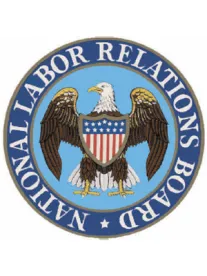Las Vegas, Nevada-based Laborers Local 872 did not violate the National Labor Relations Act by displaying four-foot high banners and inflatable animals 18 to 20 feet high around the perimeter of a casino and resort complex (Westgate), and partially blocking cars and patrons, because Westgate contracted with a non-union contractor (Nigro) to perform renovation work at the complex, an Administrative Law Judge of the National Labor Relations Board has held, rejecting a complaint by the agency’s General Counsel. Laborers Local 872, JD(SF)-32-15 (Aug. 21, 2015).
According to the decision, in early 2015, Westgate contracted with Nigro to perform renovation work at the facility. Nigro, in turn, subcontracted with A&B Environmental to do some of the work. Shortly thereafter, the union, which was not the bargaining representative of any of the three companies’ employees, began protesting at Westgate by stationing large banners and inflatable animals at various locations around the perimeter of the property. The banners stated, “LABOR DISPUTE: NIGRO DEVELOPMENT SUPPORTS IMMIGRANT LABOR ABUSE BY HIRING A&B ENVIRONMENTAL AT THE WESTGATE.” Each banner was held upright; the inflatable animals typically were placed near the banners, standing erect on their hind legs. Up to seven inflatables and approximately the same number of banners were stationed around the perimeter of the property. One of the banners partially interfered with one of Westgate’s wheelchair and scooter ramps and an inflatable rat blocked an employee driveway.
The NLRB’s General Counsel argued that the union’s display was an unlawful secondary boycott. The ALJ disagreed, finding the union’s conduct did not violate the NLRA. Although the union’s banners partially interfered with one of Westgate’s wheelchair and scooter ramps and the inflatable rat blocked an employee driveway, the Judge was unpersuaded. Relying on Carpenters & Joiners of America, 355 NLRB No. 162 (2011), in which the Board held it was lawful for a union to display stationary banners at a neutral employer’s premises in a non-coercive, non-disruptive manner to publicize a labor dispute, the ALJ explained that the union did not directly disrupt, or threaten to disrupt, Westgate’s operations. Westgate had alternative routes to its entrance, and the General Counsel could not establish that anyone actually was blocked or impaired from accessing Westgate’s facilities as a result of the union’s demonstration. The ALJ further dismissed the General Counsel’s argument that the union trespassed on Westgate’s property, noting that the areas accessed by the union were not identified as private or restricted until a week into the union’s demonstrations and that the union stayed off of Westgate’s property once it was put on notice of this.
While an Administrative Law Judge’s decision, such as this, may be appealed and overturned by the NLRB, employers faced with the possibility of union demonstrations should take note. Unless a demonstration actually blocks or impairs access to the employer’s facilities (more than minimally), an unfair labor practice charge alleging the existence of an unlawful secondary boycott may fail. Employers subject to a labor demonstration should document the evidence supporting their position that the demonstration significantly interferes with the conduct of their business, especially where banners and other stationary objects are used.





 />i
/>i

